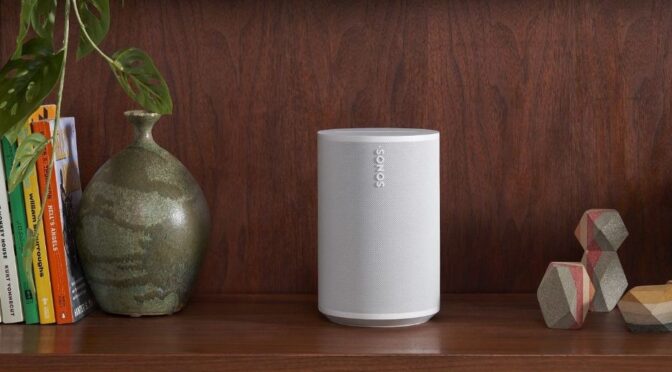The Sonos One set a standard in 2019 as a compact, versatile wireless speaker. Enter the Sonos Era 100, which aims to build on its predecessor with several key improvements.
Design and Build
The Era 100 introduces a new oval design, moving away from the Sonos One’s rounded square shape. It’s slightly taller and heavier but maintains a compact footprint. Available in matte black and white, the design is sleek with a wraparound grille. Personally, I was pleasantly surprised by its substantial feel—indicative of its robust build quality.
Enhanced Sound and Connectivity
A major upgrade is the shift from mono to stereo sound. The Era 100 features two angled tweeters and a larger woofer, each powered by its own Class D amplifier, delivering improved bass and sound separation. The sound quality, with its signature Sonos richness and strong bass, is impressive for such a compact package. It surpasses the Sonos One Gen 2 and even rivals the older Play:3.
Bluetooth 5.0 has been added, enhancing connectivity alongside wi-fi capabilities, allowing for easier pairing and stable connections.
Features
The speaker works seamlessly with the Sonos S2 platform, supporting a wide range of music sources and settings. Voice control includes Sonos’s assistant and Amazon Alexa, though Google Assistant is not supported. Installation was straightforward, and Spotify Connect functions smoothly through the Spotify app.
Trueplay tuning, now available for Android users, optimizes sound based on room acoustics. The Era 100 can also pair with another unit for stereo sound or serve as rear speakers in a home theater setup.
Addressing Critiques
Sonos has faced criticism for the sound quality of the Roam and bugs in the new app. However, with the Era 100, they seem to have addressed these issues effectively. The sound quality is robust, and the app experience during setup and use has been smooth.
Pricing
The Sonos Era 100 launched at £249 / $249 / €279 / AU$399. This represents a modest increase from the Sonos One’s original price, reflecting the new features and enhancements.
Performance
The Era 100 offers a larger soundstage than the Sonos One, with more detailed bass and clarity. It provides a robust sound experience, though the Apple HomePod 2 may offer slightly more nuanced detail.
Position in the Sonos Lineup
Within the Sonos lineup, the Era 100 serves as a versatile, mid-range option, bridging the gap between more basic models and the advanced Era 300. While the Era 100 focuses on stereo sound and compact design, the Era 300 offers spatial audio capabilities for an immersive experience, catering to different audio preferences and room setups.
Conclusion
The Sonos Era 100 brings notable improvements over the Sonos One, focusing on enhanced sound and connectivity. Despite previous critiques, Sonos has effectively addressed these with the Era 100, making it a strong choice for those invested in the Sonos ecosystem or seeking a versatile wireless speaker.


















